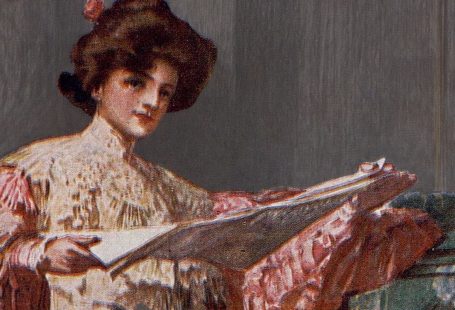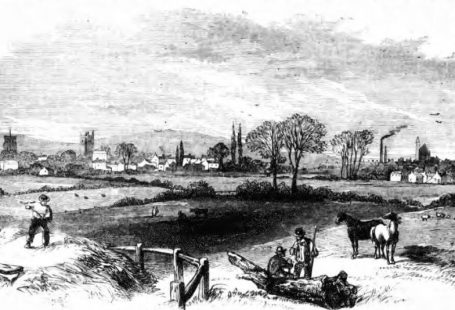This week at The Archive we have been busy adding 153,926 brand new pages, with the addition of a dozen new titles from London’s north, east, south and west, as well as a historic title from Norfolk and one representing the interests of Australia and New Zealand.
So read on to discover more about our new titles of the week, as well as to discover more about the nineteen titles that we have updated, and to find out about the creation of the colony of Queensland in 1859.
Register now and explore the Archive
Our first new title of the week is the Australian and New Zealand Gazette. First published on 19 October 1850, the Australian and New Zealand Gazette was set to be a ‘Fortnightly Summary of Intelligence from New South Wales, Van Diemen’s Land, South Australia, Port Phillip, Western Australia, and New Zealand.’ Printed in London, and published by Alexander Elder Murray, it consisted of sixteen pages and cost six pence.
The Australian and New Zealand Gazette aimed to ‘provide for the use of the merchant, the shipper, and the intending emigrant, a permanent record of all the events of importance passing in the whole of the Australian settlements as well as in New Zealand.’ The newspaper, therefore, contained the latest news from across Australia and New Zealand, with a particular focus on commercial and shipping news.

Meanwhile, the Australian and New Zealand Gazette focussed on pertinent ‘colonial topics,’ with articles like the ‘Dissolution of the New Zealand Company,’ and the ‘General Summary of the Affairs of the Southern Colonies.’ The newspaper is a fascinating resource for those whose ancestors emigrated to Australia and New Zealand during this period, offering the latest news from both places, aimed at a British audience.
Our next new title of the week is a Norfolk one – the Lynn News & County Press. Established in King’s Lynn in 1862, an historic market town which was at one point one of England’s most important ports, the Lynn News cost one penny and was intended for circulation in ‘Norfolk, Cambridgeshire, the Isle of Ely, and South Lincolnshire.’

Liberal in its politics, the Lynn News was published every Saturday and had a circulation of 4,000, with its primary focus on the area of West Norfolk. With two pages filled with advertisements, the Lynn News contained the latest from such towns as Yarmouth, Hillington, Cromer, Walsingham and Downham, as well as the city of Norwich. Also featured within its pages were reports from Lynn Board of Guardians and Lynn Town Council, a ‘London Letter,’ international news, and notices of births, marriages and deaths.
And now to London for our next new titles, and we find ourselves south of the Thames in the Borough of Southwark for our third new title of the week, the Southwark Mercury. ‘A Family Newspaper, circulating in the Borough of Southwark and adjoining districts,’ the Southwark Mercury was first published on 4 January 1879 at the cost of one penny.

Consisting of eight pages, the Southwark-based newspaper appeared every Saturday, and promised to be ‘a bold and earnest advocate in the Borough of the Conservative cause.’ The newspaper’s first edition notes how ‘there is at once room and need in this great community for a newspaper specially devoted to the promotion of Conservatism,’ commenting how it is ‘the only wonder [that] such a paper has not been established long ago.’
Meanwhile, the publishers of the Southwark Mercury promised to render their new newspaper ‘conducive to the social and moral advantages of all classes of the community, by promoting objects of local importance.’ To those ends, the newspaper featured the latest from local boards of guardians and police courts, as well as the Surrey Sessions. The Southwark Mercury also contained national news, the latest ‘Foreign Affairs,’ as well as sections devoted to literature, poetry, ‘Things Comic and Serious,’ and football.
Staying in the area now for our next new title, which is the South London Times and Lambeth Observer. First published on 15 November 1856 at the cost of just one halfpenny, the South London Times and Lambeth Observer consisted of four pages and was printed by George Mansell from King Street, Southwark.

Its first edition promised to represent ‘the ancient and time honoured Borough of Southwark, with its beautiful, picturesque, rich and influential suburbs.’ Meanwhile, the South London Times pledged ‘simply [to] be a Local Paper, without any attempt at excelling our neighbours.’ And so the newspaper featured news from the local boards of guardians, such as St. George the Martyr on Borough High Street, as well as national news and ‘Police Intelligence.’
We go slightly east now for our next new title, the Borough of Greenwich Free Press. This lively newspaper was first published on 4 August 1855 by James Seaward from London Street, with the full title of the Borough of Greenwich Free Press and Kent and Surrey Commercial Advertiser. Costing three halfpence, the Borough of Greenwich Free Press appeared every Saturday and consisted of six pages.
The first edition of the new Greenwich newspaper laid out its aims as follows:
It has been our endeavour to supply the Family Newspaper at the lowest possible cost…there is an increased demand for newspaper literature – that the masses are beginning to read and think for themselves – that everything is progressive…We intended to place within reach of all a paper containing all the news of the week – home and foreign – at what has been, heretofore, an unprecedently low charge.

Indeed, the Borough of Greenwich Free Press was filled with news, with local news from the Greenwich Board of Guardians, the County Court and the Woolwich Police Court, sitting alongside international news and sections like ‘Remarks on Passing Events’ and ‘Wit and Humour.’ The newspaper also featured a range of interesting articles, from ‘What We Eat and Drink,’ ‘Facts for the Naturalist,’ and ‘Celibacy in the Army,’ as well as announcements of recent births.
We go to London’s West End now for the our next new title of the week, the Hammersmith Advertiser. This newspaper was first published in 1861 and cost one penny, and circulated throughout ‘Hammersmith, Brentford, Fulham, Hounslow, Ealing and Turnham Green.’ It featured local ‘Parochial News,’ containing the latest from the Chelsea and Kensington Vestries, as well as the Fulham Union and the Kensington Guardians.

Another lively paper, the Hammersmith Advertiser contained a range of fascinating articles, such as ‘A Gorilla Incident’ and ‘A Little Spice of Romance,’ as well as ‘News from Abroad,’ ‘Metropolitan Gossip,’ and the latest from the markets.
And now to north London, and the Clerkenwell Dial and Finsbury Advertiser. Printed by Adams and Gee, the Clerkenwell Dial and Finsbury Advertiser was first published on 12 April 1862 at the cost of one halfpenny. A Saturday newspaper, it featured local news from the Clerkenwell Workhouse, St Luke’s Vestry, Islington Trustee Board, and the Holborn Board of Works.
Meanwhile, the first edition of the Clerkenwell Dial and Finsbury Advertiser laid out its aims as follows:
Our object is to supply an urgent necessity, and produce a paper which shall be really useful to the inhabitants of the district. This portion of the metropolis requires it. It is densely populated – perhaps no other district more so; it carries a great trade, especially in clocks and watches, and other articles of gold and silver manufacture. This will be the first and chief object of the Paper -to devote itself to local matters.

Another north London newspaper we have added this week is the Islington Times. First published on 2 May 1857 at the cost of one halfpenny, the Islington Times described itself as a ‘Weekly Family Journal, and General Advertiser for Pentonville, Barnsbury, Canonbury, Highbury, Holloway, Highgate, Hornsey, Stoke Newington, de Beauvoir Town, Kingsland and Hoxton.’
Consisting of four pages, the Islington Times stated that ‘it is not the organ of any party…in the parish.’ It desired:
…to be the upholder of every local institution which has for its aim the welfare of the parish, or the good of individuals. We pledge ourselves not to pander to the depraved tastes of the multitude, but ever to uphold the interests of ‘true religion’ and virtue.

Featuring local intelligence from the Islington Vestry, the Islington Times also contained poetry and notices of births, marriages and deaths.
Our final north London newspaper of the week is the aptly named North Londoner. First published on 6 February 1869 at the cost of one penny, it featured sixteen pages detailing all the latest from north London, and provides a wonderful window onto the area in the mid-Victorian period.
Containing local intelligence from Barnsbury, Barnet, Colney Hatch, Hampstead, Harrow, Highbury, Highgate, Islington, Kentish Town, New Barnet, St. John’s Wood, Upper Holloway, Uxbridge and Wood Green, the North Londoner also featured a section devoted to ‘Notable North Londoners,’ the first edition concentrating on John Constable. Meanwhile, the newspaper published ‘Financial Notes,’ a ‘Poet’s Corner,’ a section devoted to everything ‘Literary and Scientific,’ news on the latest ‘North London Bankrupts,’ and the area’s latest births, marriages and deaths.

We have also added the British Banner 1848 and the British Banner 1856 to The Archive. The former title was first published on 7 January 1848 with the watchwords of ‘Literature, Humanity and Religion,’ and aimed to provide guidance to the prospective young British voter.
A new series of the British Banner (the British Banner 1856) appeared from 4 January 1856, printed and published by Daniel Pratt, describing itself now as a ‘complete Weekly Paper for the use of Christian families.’
Our final new title of the week is the Palladium 1825. First published on 6 February 1825 by an ‘Officer in the Army,’ the new publication roared into life by declaring ‘Destruction to Persecutors.’ Costing seven pence, and filling sixteen pages, the Palladium 1825 made other bold statements such as ‘Death Before Subjugation,’ professing its Conservative and anti-Catholic views in columns such as ‘No Popery.’

The Palladium 1825 was resurrected in 1829, with the same rabidly anti-Catholic ethos.
That’s all from our new titles this week, but we have updated nineteen of our new titles over the past seven days. Most significant of these updates are the 86,000 pages we have added to the Daily News (London), whose very first editor was none other than Charles Dickens. We have added pages this week to this newspaper from the 1920s through to 1960. Meanwhile, we have also made significant updates to the Bury Free Press, the Lynn Advertiser, and the Grantham Journal.
The Creation of the Colony of Queensland
First inhabited by Aboriginal Australians and Torres Strait Islanders, the area now known as Queensland was colonised by Arthur Phillips in 1788, as part of New South Wales. The area was explored in the decades after this, with the Moreton Bay Penal Settlement established in Brisbane in 1824. However, on 6 June 1859 Queensland separated from New South Wales, to become a self-governing Crown Colony.

Our new newspaper the Australian and New Zealand Gazette gives special insight into this separation, and how it was not viewed on favourably by inhabitants of New South Wales. On 7 May 1859, in a section titled ‘Home News,’ the newspaper reports on the news of the separation:
In a semi-official statement, the Times announces that it has been decided to erect into a colony the district of Moreton Bay, now a portion of the Government of New South Wales. The formation of this district into a separate and independent colony has been for the last six years urgently and repeatedly pressed by the inhabitants on the Home Government.
The Australian and New Zealand Gazette tells of how the new colony ‘will take the name of Queensland,’ and how it would be under the governorship of Sir George Furguson Bowen, who was presently ‘Chief Secretary to the Lord High Commissioners of the Ionian Islands.’
But some months later, in October 1859, the Australian and New Zealand Gazette tells of the ‘bitterness and animosity’ which the separation had created in some quarters. Indeed, it elaborates on the ‘questions of local privileges and jealousies,’ which saw the ‘new colony of Queensland [greeted] with anything but a friendly feeling.’

The newspaper describes the views of the people of New South Wales and their position regarding the new colony:
…the people of New South Wales, who maintained so stout and so successful a content with the Colonial-office for the administration of their own affairs, should resist the demands of the settlers in Moreton Bay for the same privileges, for when strictly anaylsed the claims of both are identical.
The Australian and New Zealand Gazette also gives the perspective of the ‘Moreton Bay people,’ namely, the people of the new colony of Queensland:
The Moreton Bay people, have…long complained that their interests are not only entirely neglected, but often sacrificed to those of the districts nearer Sydney; and…allege that their case has become much worse since the new and almost democratic system of government has been established, owing to the influence exercised by more populous localities, whose representatives, they say, so far from restricting the public expenditure, are only anxious to secure as much of it as they can for their own localities.

But whatever the resistance demonstrated by the people of New South Wales, they could not prevent the creation of the new colony. On 1 January 1901 Queensland became one of the founding states of Australia with Federation, and today it is the second largest and third most populous state in Australia.
New Titles
Title |
Years Added |
| Australian and New Zealand Gazette | 1850-1882 |
| Borough of Greenwich Free Press | 1855-1856, 1858-1865 |
| British Banner 1848 | 1852 |
| British Banner 1856 | 1857 |
| Clerkenwell Dial and Finsbury Advertiser | 1862, 1864-1865 |
| Hammersmith Advertiser | 1861-1866 |
| Islington Times | 1857, 1859-1862, 1864-1865, 1871-1874 |
| Lynn News & County Press | 1871-1873, 1875-1889, 1891-1892, 1913, 1915, 1918, 1924, 1938-1939, 1942 |
| North Londoner | 1874-1875 |
| Palladium 1825 | 1825 |
| South London Times and Lambeth Observer | 1856-1865 |
| Southwark Mercury | 1879-1881 |
Updated Titles
This week we have updated nineteen of our existing titles.
You can learn more about each of the titles we add to every week by clicking on their names. On each paper’s title page, you can read a FREE sample issue, learn more about our current holdings, and our plans for digitisation.
Title |
Years Added |
| Age | 1852 |
| British Mercury or Wednesday Evening Post | 1822 |
| Brockley News, New Cross and Hatcham Review | 1891 |
| Bury Free Press | 1988 |
| Chelsea & Pimlico Advertiser | 1864 |
| Croydon Times | 1948-1949 |
| Daily News (London) | 1924, 1926, 1928-1938, 1940-1949, 1951-1954, 1957-1960 |
| Diss Express | 1986 |
| Eastern Counties’ Times | 1913 |
| Faversham News | 1900, 1904 |
| Fleming’s British Farmers’ Chronicle | 1827 |
| Grantham Journal | 1986 |
| Kingsland Times and General Advertiser | 1861 |
| Liverpool Telegraph | 1837 |
| Lynn Advertiser | 1990 |
| Metropolitan | 1857 |
| Sheerness Times Guardian | 1878-1882 |
| West London Times | 1862, 1865 |
| Westminster Times | 1864-1866 |
You can keep up to date with all the latest additions by visiting the recently added page. You can even look ahead to see what we’re going to add tomorrow.






